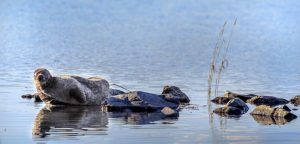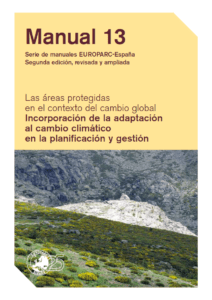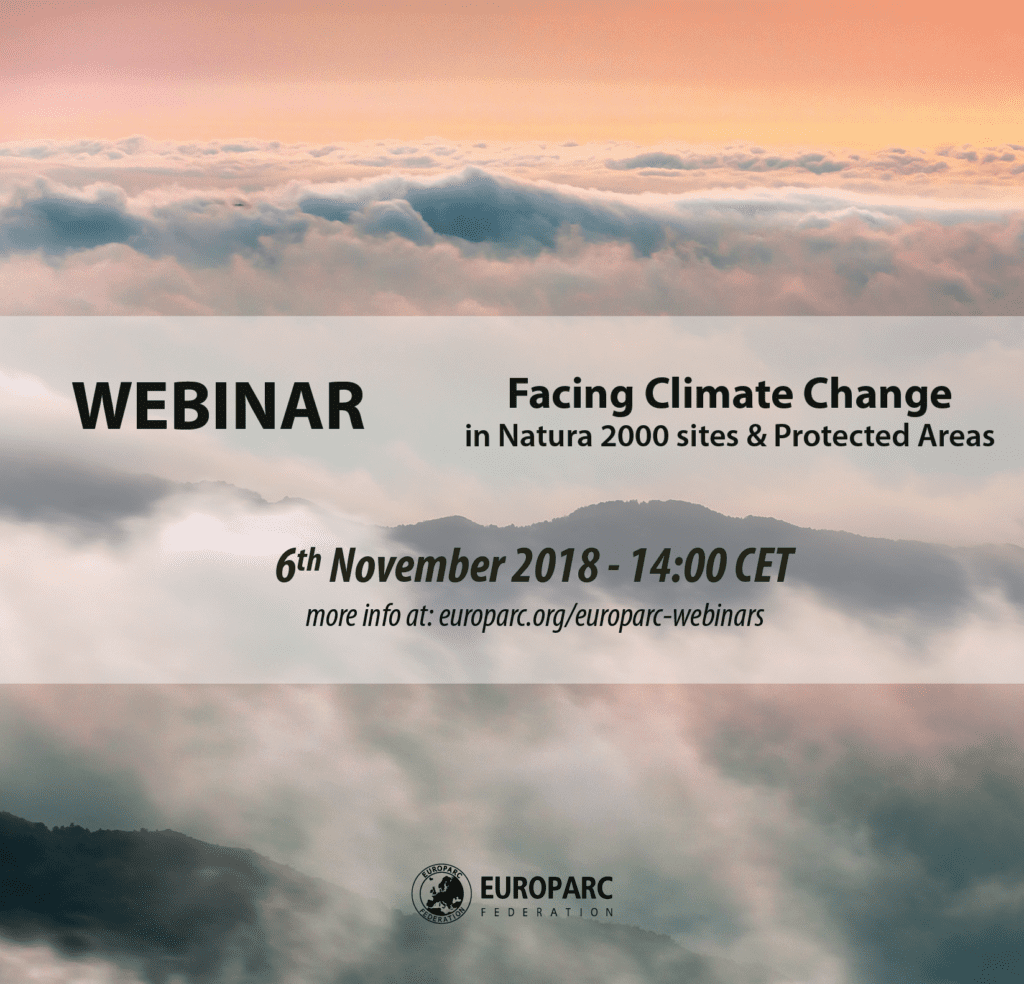Next Webinar: Facing Climate Change in Natura2000 sites
Facing Climate Change in Natura 2000 sites & Protected Areas
- 6th November 2018, 14:00 CET (Central Europe Time)
- Register here
Protected Areas (PAs) and especially Natura 2000 sites are in the front line of nature conservation: monitoring, evaluating, and sounding the alarm of biodiversity loss and climate change effects. As natural hubs of biodiversity, they ensure genetic diversity increasing the resilience of species – and their chances of survival – when threatened by disease and natural changes. Besides contributing to climate change adaptation, Natura 2000 sites and PAs, in general, have also a potential to contribute to climate change mitigation. Responsible for around 15% of the terrestrial carbon stock (Campbell et al., 2008, in UNEP-PA and Climate Change) protected habitats prevent the loss of carbon stored in natural ecosystems.
In this webinar, we will learn the efforts to preserve a species threatened by the effects of climate change and will learn how protected areas can incorporate adaptation measures into their management plans.
The webinar is presented by Michael Hosek, coordinator of the EUROPARC Natura 2000 Commission, who will frame the opportunities and challenges for Natura 2000 sites and protected areas in the context of the European Environmental Policy. Further, Olivier de Sadeleer will introduce us the Life ClimaAdapt, a five-year project to which EUROPARC collaborates. It aims at developing a participative methodology to adapt nature protection to the challenges of climate change in Europe and will bring benefits to all EUROPARC members.
Case Study 1
New conservation methods for the Saimaa ringed seal in a changing climate
by Miina Auttila, Conservation biologist, Finland

The Saimaa Ringed Seal, by Timo Seppäläinen
Breeding success of the critically endangered Saimaa ringed seal (Phoca hispida saimensis) is depending on sufficient ice and snow cover, and therefore climate change threats the population. Man-made snowdrift method has been developed to improve the seals’ breeding success during poor snow conditions. This method was implemented as a conservation act first time in the EU funded Safeguarding the Saimaa ringed seal Life+ project. During the five years project the full-scale implementation of the method was conducted in three winters due to weak snow cover. In addition, in two winters the snowdrifts were piled at places where snow conditions were the weakest.
Metsähallitus organized the conservation act and around 300 volunteers participated to the process where altogether ca. 1 000 snowdrifts were piled at Lake Saimaa. In those five years most of the man-made snowdrifts were used by seals, and around 70% of pups were born in the piled snowdrifts and the pre-weaning mortality remained relatively low. The man-made snowdrift method proved to be effective for improving the seals breeding success during mild winters. In addition, two types of artificial nest structures have been under development and testing. Preliminary results of the art-nests are encouraging for further development.
Case Study 2
Toolkit for incorporating adaptation to climate change in the planning and management of protected areas
by Marta Múgica, Coordinator, EUROPARC Spain
Management plans are the main and most important tool for natural areas, as they set biodiversity and conservation targets along with indicators and evaluation criteria. However, while other drivers of climate change (like changes in land use, invasive species or pollution) are well identified and targeted in management plans, the attention shown to climate change is very scant, often non-existent.
Adaptation to climate change in protected areas should be based on an ecosystem approach, aiming for the protection of the natural resources and ecosystem services provided to society. To support Protected Areas technicians and decision makers to better incorporate actions for climate change adaption in their management plans, EUROPARC Spain launched a practical manual in 2017 –Adaption to Climate Change in Protected Areas, and a practical Toolkit.

